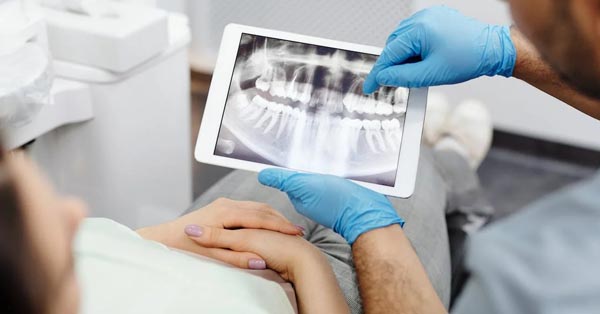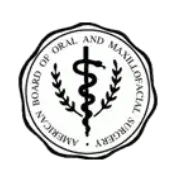Complications During and After Surgical Removal of Third Molars
By: by Hans Ulrich Brauer, DDS, Dr. Med Dent, MA; Robert A. Green, DDS, MD, Msc, FRCD(C); Bruce R. Pynn, Ms, Oral Health Group
There are recent studies which identify risk factors during and after removal of third molars. Complications may arise, therefore, thorough planning and surgical skills are very important. The Woodview Oral Surgery Team
INTRODUCTION
Third molar surgery is one of the most common procedures performed in oral and maxillofacial surgery offices.1-6 Nevertheless, this procedure requires accurate planning and surgical skills. With surgical procedures in general, complications can always arise. The reported frequencies of complications after third molar removal are reported between 2.6 percent and 30.9 percent.1 The spectrum of complications range from minor expected sequelae of post-operative pain and swelling, to permanent nerve damage, mandibular fractures, and life-threatening infections. Minor complications are generally defined as complications that can recover without any further treatment. Major complications can be defined as complications that need further treatment and may result in irreversible consequences.5,6 Although impacted third molars may remain symptom-free indefinitely, they may be responsible for significant pathology.7 Pain, pericoronitis, development of periodontal disease on the second molar, crown and/or root resorption of the second molar, caries in third or second molars and TMJ-symptoms are associated with retained third molars.2 More significant pathology such as fascial space infections, spontaneous fracture of the mandible, and odontogenic cysts or tumors may also occur.2
There are numerous recent studies, which identify risk factors for intraoperative and/or postoperative complications.1,5,6,8-15 Common intra- and postoperative complications and side effects associated with third molar removal are summarized in Table 1. For the general dental practitioner, as well as the oral and maxillofacial surgeon, it is important to be familiar with all the possible complications. This improves patient education and leads to early recognition and management. In this review, complications are considered rare or unusual if the incidence is commonly quoted below 1 percent. The aim of this systematic review is to remind us of the unusual complications associated with third molar surgery.
METHOD AND MATERIALS
Studies were found using systematic searches in Medline and the Cochrane Library electronic databases between 1990 and the present. Additionally, hand searching of key texts, references, and reviews relevant to the field was performed. Key words included the terms "third-molar," "wisdom tooth," "complications," "unusual," and "rare."
Data was included if the following criteria were met:
- The study had to deal with intra- or postoperative complications associated with the removal of third molars.
- The date of publishing had to be between 1990 and 2013.
- The text had to be published in English or German language.
- In order to gather all the important studies, the references from the found studies were double-checked.
RESULTS
There are many studies reviewing permanent inferior alveolar and lingual nerve injuries and mandibular fractures during and after lower third molar removal. Several other studies/reports include inflammatory processes, unusual abscess formations and displacement of teeth in different spaces. An overview is shown in Table 2. All of these complications are considered major.
Furthermore, there are single case reports that describe extreme events, such as asphyxial death caused by postextraction hematoma, life-threatening hemorrhage, benign paroxysmal positional vertigo, subcutaneous and tissue space emphysema, subdural empyema, and herpes zoster syndrome. The reviewed case reports are presented in Table 3.
The main patient age among the cases was 28 (SD 12.7) years. In the majority of the cases, the complication occurred after third molar removal of the lower jaw. A second surgical intervention was needed in nearly all cases. In order to find the cause of the complication, computer tomography (CT) or magnetic resonance imaging (MRI) was need all of the cases. In the majority of the cases, the first surgical procedure was described as complicated and the intervention was reported as extensive or lengthy.
DISCUSSION
Permanent nerve damage
Permanent inferior alveolar or lingual nerve damages is extremely rare, but in general, well-known risks associated with third molar surgery. Injury of the lingual or the inferior alveolar nerves during removal of lower third molars is among the most common causes of litigation in dentistry.16 A close anatomic relationship between these nerves and the third molar places them at risk for injury. The incidence of these extremely rare complications vary among the studies and are difficult to be determined exactly due to the small study populations. The incidence of permanent inferior alveolar nerve lesions ranges from 0 percent17,18 to 0.9 percent;19 the usual accepted rate is about 0.3 percent.20,21 The complication rate for temporary lingual nerve damage is around 0.4 percent22 and for permanent lingual nerve damage, it is even lower.2,20
Mandibular fracture
Immediate or late fracture of the mandible is a rare event, but a major complication.23 The reduction of bone strength may be caused by physiologic atrophy, osteoporosis, pathologic processes, or can be secondary to surgical intervention.24 There is no valid data on the incidence of mandibular fractures and the risk factors are not clearly understood.24 Libersa et al., found an incidence of 0.0049 percent.25 In a study by Arrigoni & Lambrecht, 3980 third molar removals were analyzed.8 This group detected a complication rate of about 0.29 percent. The peak incidence occurs in patients over 25 years, with a mean age of 40 years.24-26 Due to a greater masticatory force, men may be more likely to have late fractures.25 Intraoperative fractures may occur with improper instrumentation and excessive force to the bone during tooth removal. Most late fractures occur between two to four weeks after surgery during masticating.51,62
Unusual inflammatory processes and abscess formation
In the reviewed case reports, extensions of the inflammatory processes to atypical regions of the brain and cervical region are discussed. In one case, a subperiosteal abscess of the orbit appeared in a 57-year-old man following the uneventful extraction of the left maxillary third molar27 which might have been caused by extension of infection via the pterygopalatine and infratemporal regions to the inferior orbital fissure. Another group presents a subdural empyema and herpes zoster syndrome (Hunt syndrome).28 In this case, a 21-year-old man had all four third molars removed. An abscess involving the right pterygomandibular and submasseteric spaces and extending to the infratemporal fossa was found. Although antibiotic therapy and drainage was initiated, he developed severe frontal headache and vomiting with a Glasgow coma score of 13. Magnetic resonance imaging (MRI) showed a subdural collection in the right temporoparietal region. He had emergency craniotomy and subdural drainage.28 Burgess reported a case of epidural abscess of a 20-year-old woman after extraction of a wisdom tooth.29 First, she was diagnosed with a musculoskeletal neck sprain resulting from posture during the operation. Three days later, the patient presented with an increased right-sided neck pain and sensational numbness to the right arm. Nine days after surgery, an epidural abscess to the right side of C4/C5 vertebrae was seen in the MRI29. In another case, a brain abscess developed after removal of the right lower third molar of a 26-year-old man. He needed emergency neurosurgery and antibiotic treatment for eight weeks.30
Displacement of third molars and instruments
Accidental displacement of impacted third molars, either a root fragment, the crown, or the entire tooth, is not common during extraction, but is nevertheless a well-recognized complication that is frequently mentioned in the literature.31-33,58 However, there is only limited information about its incidence and management. Displacement of mandibular teeth/roots usually occurs when it is located lingually, or when the lingual cortical plate is fenestrated and if surgical technique is poor.32 When a root fragment "disappears" during extraction, its retrieval should not be attempted. Immediate referral to a specialist should be arranged.34,35 Upper third molars can be displaced into the infratemporal fossa.38,39,52,56 Further reports describe third molar displacement into the submandibular space,33,38 the sublingual space,39,40,60 the pterygomandibular space,35,41 the lateral pharyngeal space42,43 or into the lateral cervical area. In one case, the symptoms started after two months. The patient experienced recurrent inflammatory swelling in the right submandibular space. Over a period of 14 months, the same dentist supervised treatment with antibiotics. After extensive imaging procedures and surgery the tooth was located beneath the platysma muscle.44 Parts of dental equipment or burs can also be lost in the adjacent tissues. A 35-year-old woman had severe trismus, swelling, and pain three weeks after removal of tooth 48. A 20 mm long diamond bur was found in the submandibular space.33
Further unusual complications
Airway compromise was described by Moghadam & Caminiti. 45 A 32-year-old man experienced swelling of the soft palate due to post extraction hemorrhage after he had undergone extraction of teeth 18, 38, and 48 at his dentist's office. Computed tomography revealed a hematoma in the submandibular and lateral pharyngeal spaces which resulted in deviation of the oropharynx and constriction of the airway at the level of the oropharynx. The patient was intubated for two days and was treated with antibiotics and high-dose steroids.45 Funayama et. al.,46 report a case of asphyxiation caused by a postextraction hematoma in a 71-year-old man. Respiratory arrest occurred 12 hours after treatment. The hematoma involved the submandibular, lingual and buccal spaces leading to severe narrowing of the oropharynx. Wasson et. al., reported a case of severe hemorrhage during the removal of an impacted third molar in a 60-year-old male patient. Over 2L of blood loss occurred prior to obtaining control, using embolization of the facial and inferior alveolar arteries.57 A single case report by Goshlasby et al., discussed the development of a right sided retrobulbar hemorrhage after the removal of an impacted maxillary right third molar. The resulting hematoma caused right periorbital swelling and ecchymosis with evidence of proptosis. The maxillary incision was extended and the hematoma was drained and bleeding was controlled. It was believed that a branch of the posterior superior alveolar artery was injured during the extraction and bleeding tracked into the orbit via the infra-orbital fissure.53 Severe intraoperative or postoperative hemorrhage is one of the few life threatening complications in which a dentist may have to initiate management.45
Thoracic complications are very rare, but have been reported in the literature.47,48,49,55,61 Sekine et. al.,47 reports on a case of extensive subcutaneous emphysema with a bilateral pneumothorax during removal of the left lower third molar in a 45-year-old man. As with many cases of emphysema, an air turbine dental handpiece was used.47-49 Recognition of mediastinal emphysema following surgical extraction is difficult because there are no absolute clinical symptoms and signs.48,49
Benign positional paroxysmal vertigo was described in one case after the removal of all third molar teeth.50
CONCLUSION
Third molar surgery is a very common procedure, but is associated with many attendant risks and complications. Fortunately, significant complications are rare, but need to be diagnosed and managed early in order to reduce morbidity, and perhaps, mortality. For the general dental practitioner, as well as the oral and maxillofacial surgeon, it is critical to be familiar with all potential complications associated with this procedure. OH






5 Stars
based on 48 reviews
5 Stars
based on 15 reviews
5 Stars
based on 11 ratings